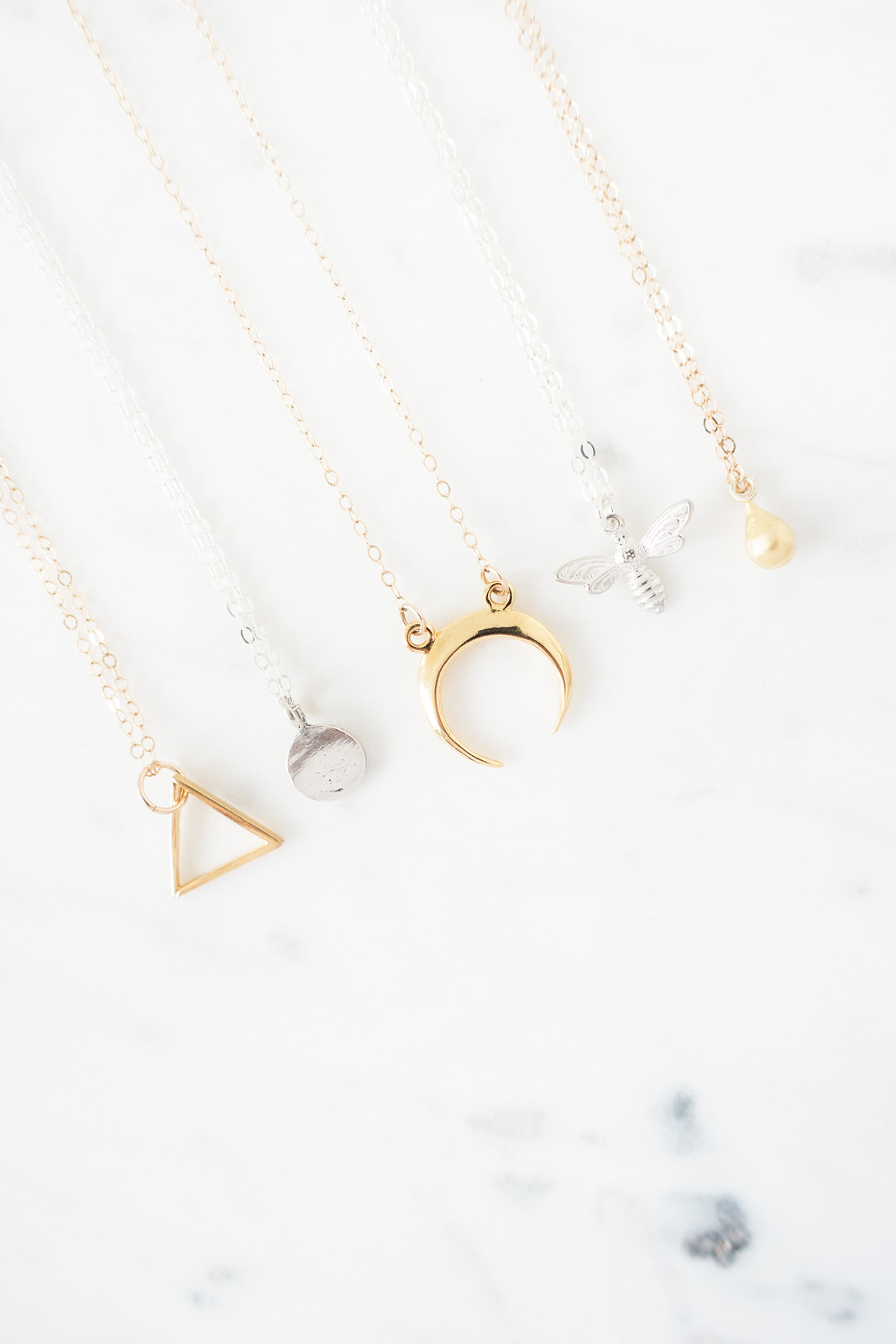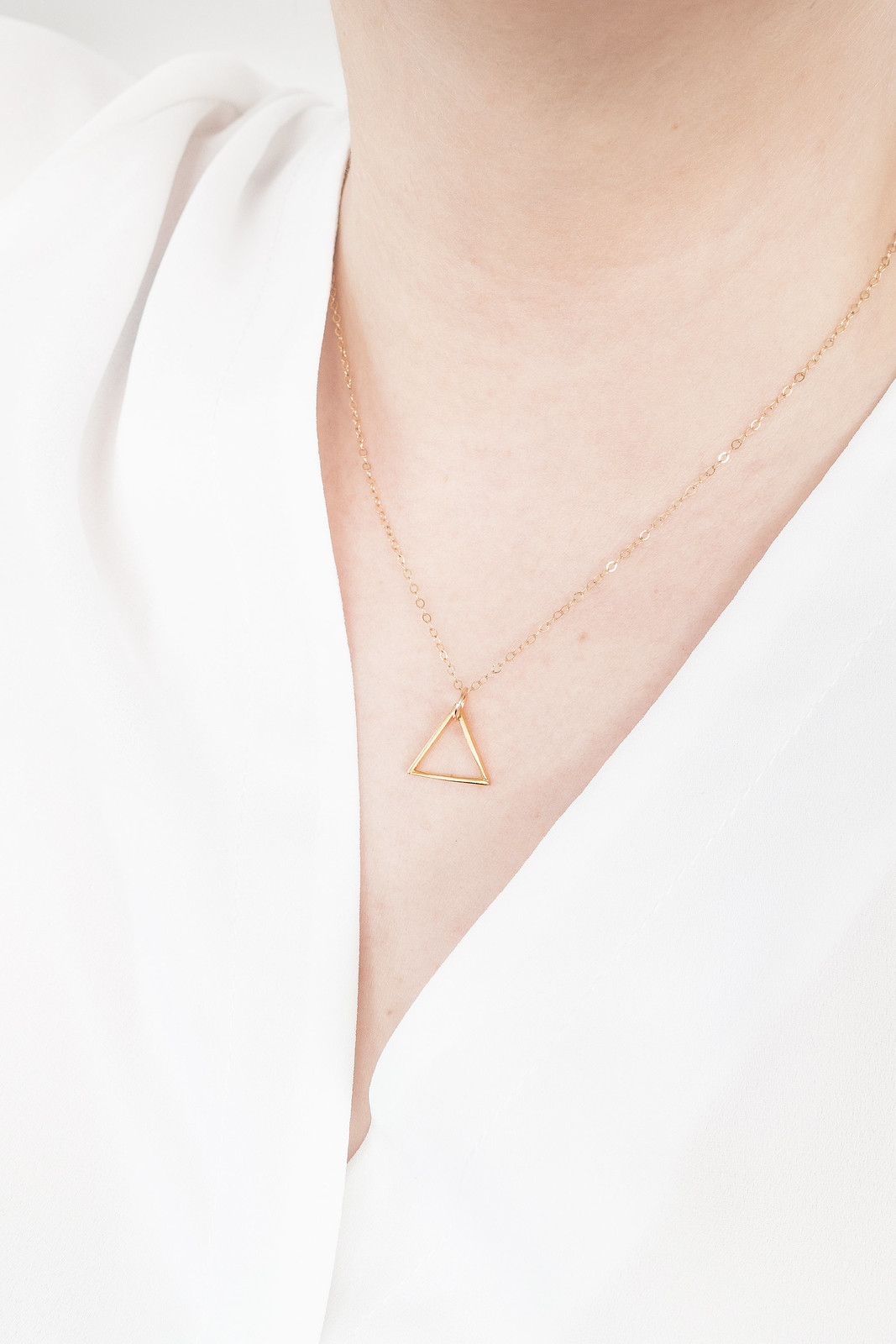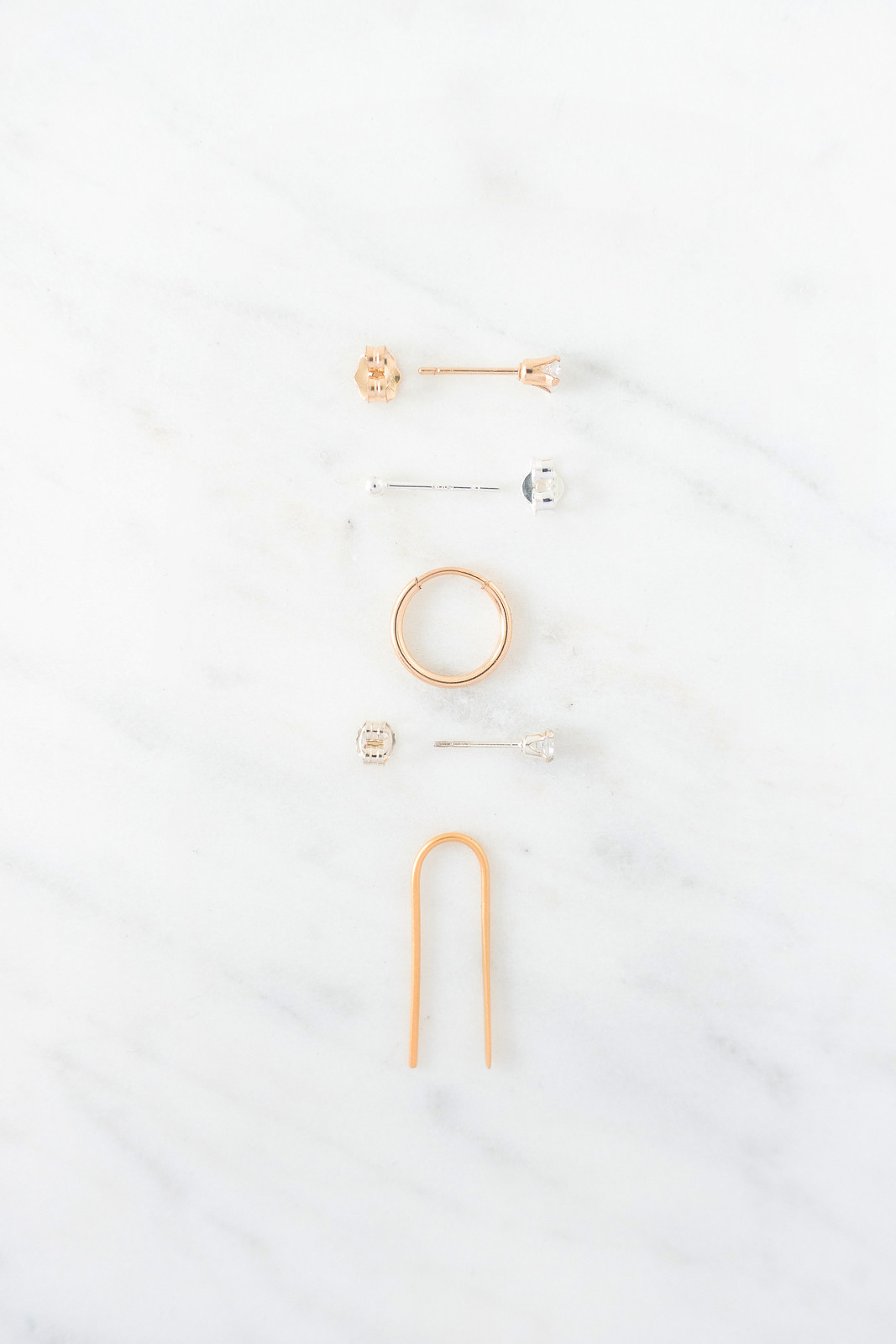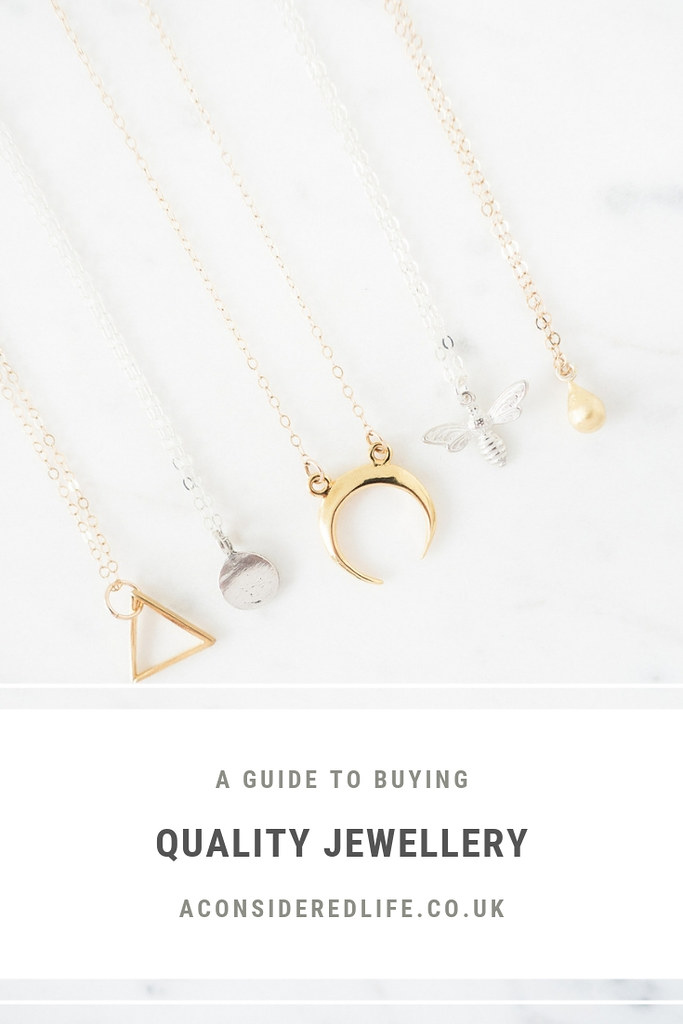
I'm a big believer that accessories make an outfit, specifically jewellery. Having a jewellery capsule collection can really pull together a wardrobe, making everything look more cohesive. A little touch of extra detail makes a world of difference and you only need a few key pieces to pull it off.
When it comes to choosing jewellery, it can be overwhelming. There's so much to think about from price and quality to size and design. Jewellery has been a huge part of my life ever since I quit my day job to become a full time jewellery designer. I wanted to share everything I know about jewellery so you can make better choices and invest in better jewellery so you're confident you're buying jewellery that will last.
Quality
Quality is the key to finding jewellery you fall in love with and wear for years. It's tempting to buy lots of cheap costume jewellery so you have plenty of options and can change it with the trends. But cheap jewellery never lasts and, after a few wears, it begins to look shabby. Yet solid gold is expensive and not within everyone's budget. Here are your options when it comes to buying jewellery:
Plated Jewellery. Plated jewellery is created using heat and pressure to fuse a thin layer of less than 1% gold or silver to a cheap base metal, such as brass or copper. Plated jewellery is very inexpensive to make, which is why most costume jewellery is made from it. Plated jewellery will look shiny and bright when you first buy it but after a few wears, the thin plating will quickly fade, discolour, flake or peel away, and can even leave green marks on your skin. Plated jewellery is never worth buying; it looks cheap and doesn't last. You're better off buying less and spending a little bit more for better quality jewellery.
Gold-Filled. Gold-filled jewellery is made by fusing a thick layer containing 5% or more gold bonded or "filled" with a quality base metal like sterling silver. This produces a permanent bond and produces the same physical characteristics as solid gold but for a fraction of the price. There's no tarnishing and it won't flake away; if taken care of properly, gold-filled jewellery can last years. It's the most affordable choice if you want to own and wear quality jewellery regularly, and solid gold is out of your price range.
Solid Gold. Solid gold is always alloyed with a mixture of metals, such as silver, copper, and zinc, to create gold jewellery since pure gold is too soft and weak to create jewellery on its own. It's long-lasting, won't tarnish, flake, or discolour but solid gold jewellery is also the most expensive option often making it unobtainable due to the high price. Solid gold jewellery is a good option if you want to invest in one or two pieces you wear all the time, and pass them on as heirlooms.
Sterling Silver. Fine silver, which is 99.9% pure silver, is too soft to be made into jewellery since it can be easily dented and scratched. Sterling silver is 92.5% pure silver, which is alloyed with harder metals to improve durability. It's much higher quality than plated jewellery and, if cared for properly, can last a lifestyle. Sterling silver will naturally tarnish due to moisture in the air reacting with the alloy. Wearing your silver jewellery often or gently cleaning it regularly will fix this. Sterling silver is a good choice if you want to buy high quality jewellery on a budget.

Size and Fit
Size and fit makes the difference between being so excited to wear something you wear it every day and always forgetting to put it on; jewellery isn't any different. I don't know about you but if something doesn't fit right, whether it's clothes or jewellery, I forget I even own it. Making sure you have the right necklace length and ring size is so important for a comfortable, I'm-never-taking-this-off fit. Below are the three most common necklace lengths, where they sit and what necklines they suit. You can read the full guide to necklace lengths here. Ring sizing is a little trickier to get right. The best way to find the perfect fit for you is to use a ring sizer and follow a size guide.
Choker: 14 or 16-inches. Fits at the base of the neck and works with almost any necklines but especially off the shoulder, crew, and boat necklines.
Princess: 18-inches. Sits on the collarbone and is the most popular length necklace because it works with all necklines.
Matinee: 20+ inches. Sitting below the collarbone, this works best with collared shirts and high necklines.
When it comes to choosing jewellery you'll want to wear every day, it's all about opting for the classic styles and timeless designs of minimal jewellery. Invest in the essentials that will take you from day to night, work to weekend: tiny studs or simple hoops, a diamond necklace (lab-grown not mined) or something equally as classic, and stacking rings that can be worn alone or together.

Ethics
Metal mining is one of the most environmentally destructive types of mining. Water pollution, poor safety standards, inhumane labor practices, and rights violations of indigenous peoples are all issues the jewellery industry faces. It's important to buy jewellery from responsible sources that use Fairtrade and/or recycled metals, lab-grown diamonds instead of mined ones, and ethically sourced gemstones; using techniques to minimise the impact caused to the environment.
The key to sustainable jewellery is buying fewer, more high quality pieces that are designed to last years rather than a season. So timeless designs made from quality materials, sourced and crafted in an eco-friendly way. Packing is also an issue to take into consideration when it comes to sustainability and responsibly managed sources. Look for non-toxic, biodegradable and recyclable packaging that is plastic-free.
Thoughtfulness and attention to detail, both in terms of the jewellery I was making and the materials I was using, from the metals right down to the packaging was at the forefront of my mind when I started Oh My Clumsy Heart. All the materials used are sustainable, and each piece of jewellery is designed to be worn every day. I work with metal suppliers who provide Fairtrade metals, and use environmentally-friendly packaging including unbleached cardboard boxes, acid free tissue paper, and recycled jewellery boxes. There's no inflated markups for storefronts, middlemen, or designer labels because I sell the jewellery directly to you from my studio. Fine minimal sustainable jewellery doesn't have to cost a fortune.

Final Thoughts
If you're building a minimalist or capsule wardrobe, investing in quality jewellery is a must. I would never recommend purchasing plated jewellery or jewellery made from plastic. Simply put, it's a waste of money. Solid gold, gold-filled, and sterling silver are all excellent choices for purchasing jewellery that will last so long as you opt for timeless designs. If your budget can spare it, a couple of solid gold pieces are a worthwhile investment. If you want more options (and have a tighter budget), gold-filled and sterling silver jewellery has a cheaper price tag without compromising on quality. It's better to invest in fewer pieces of higher quality; opting for gold-fill or sterling silver will ensure you're getting jewellery pieces that will last for years.
